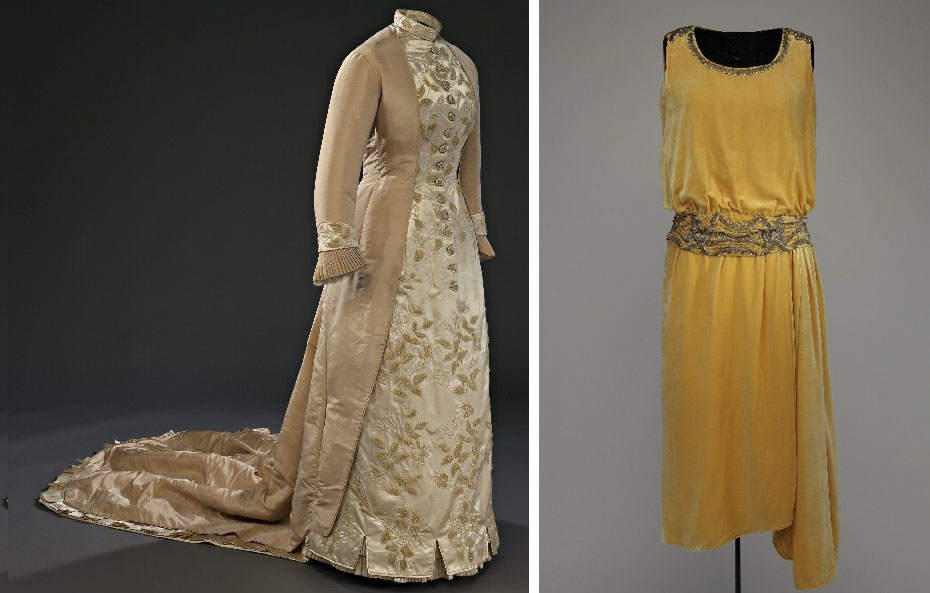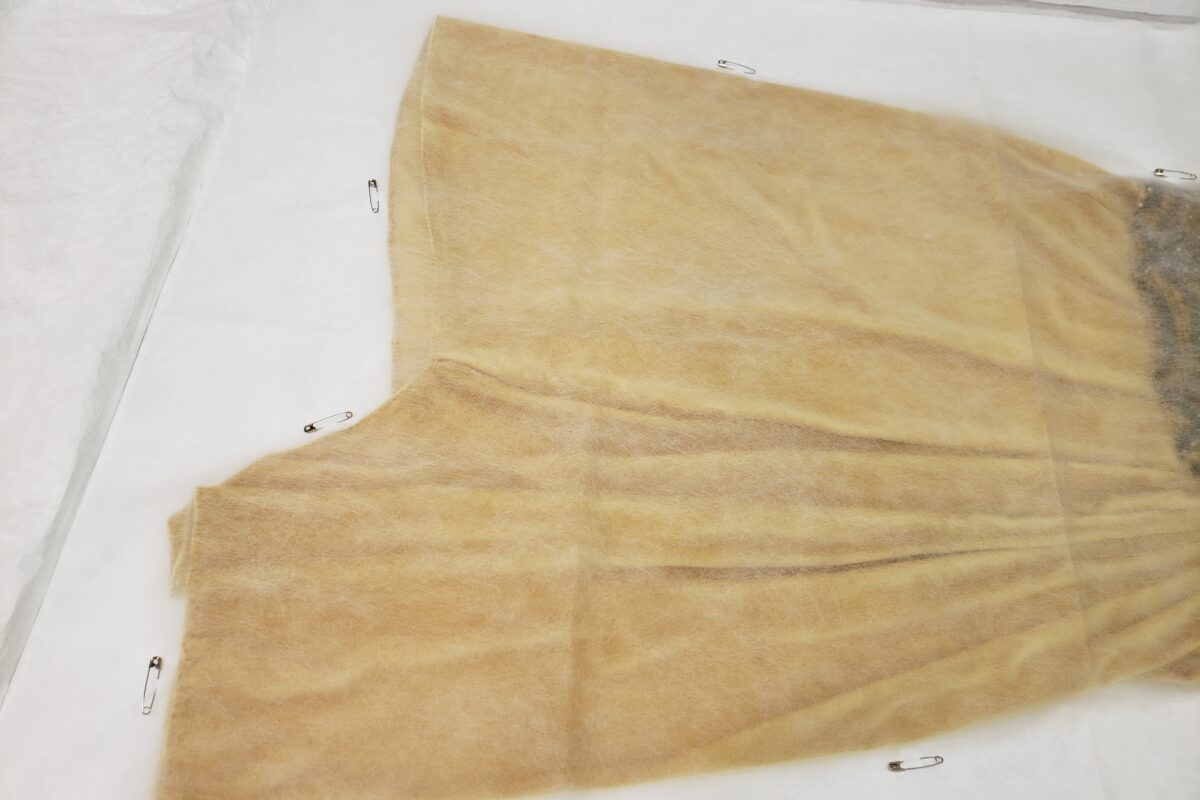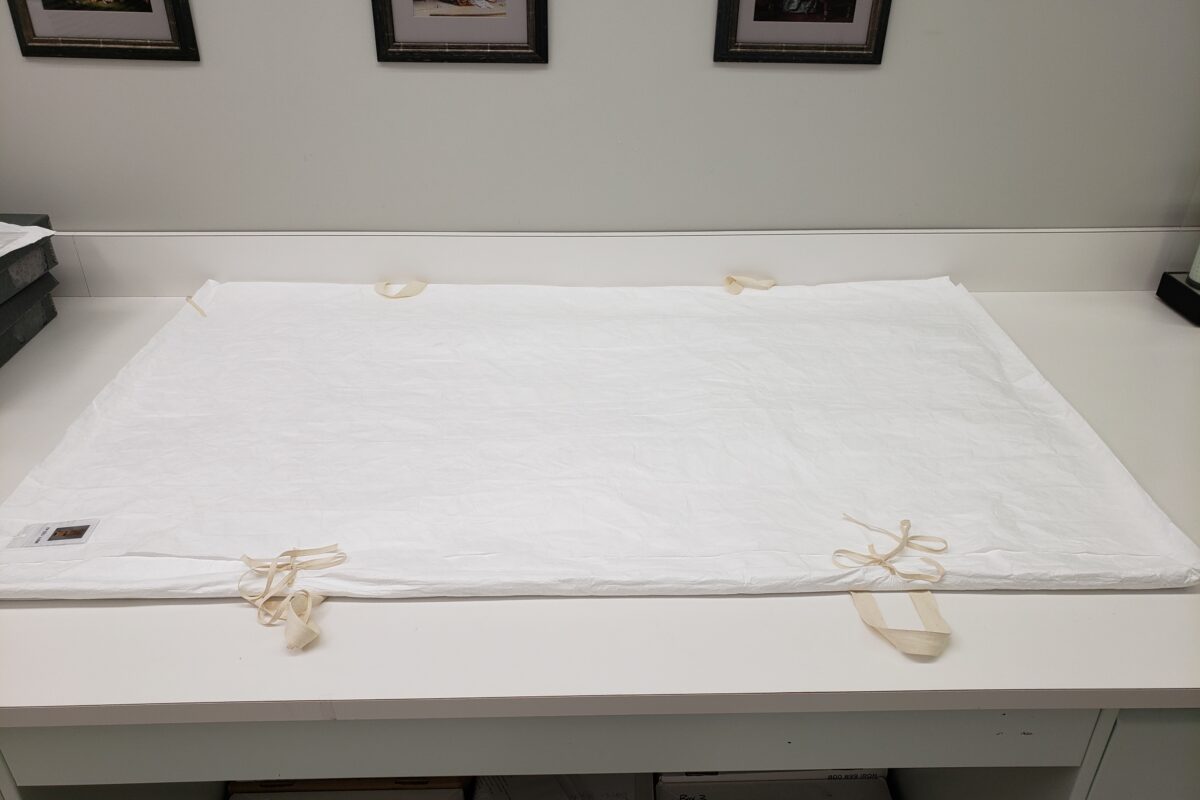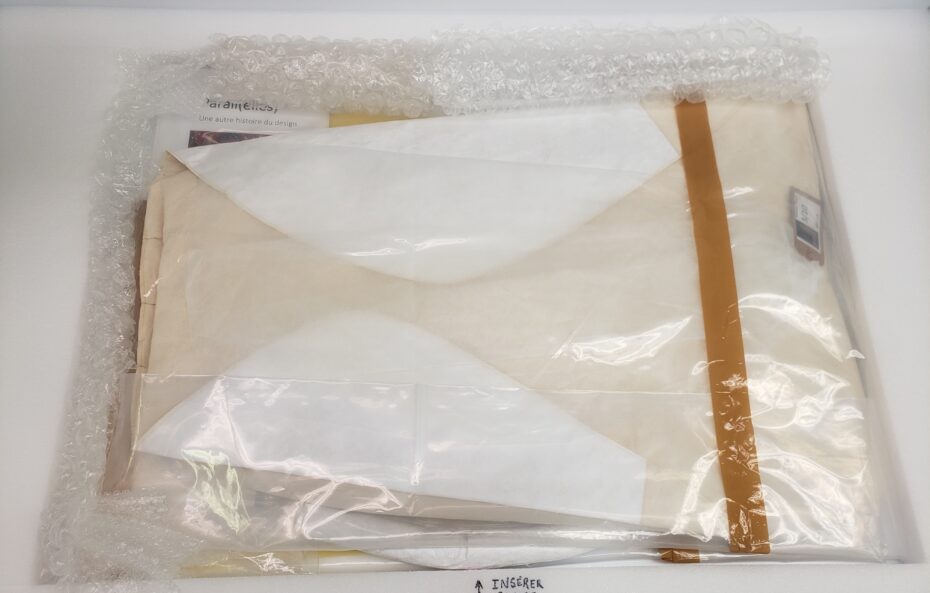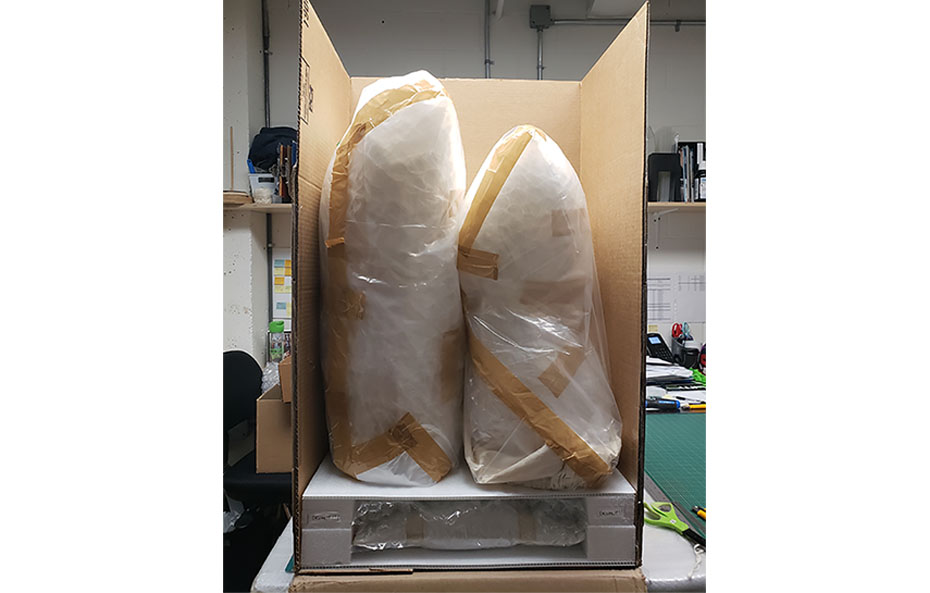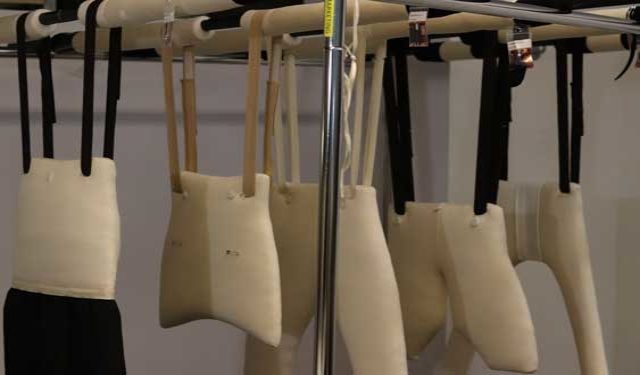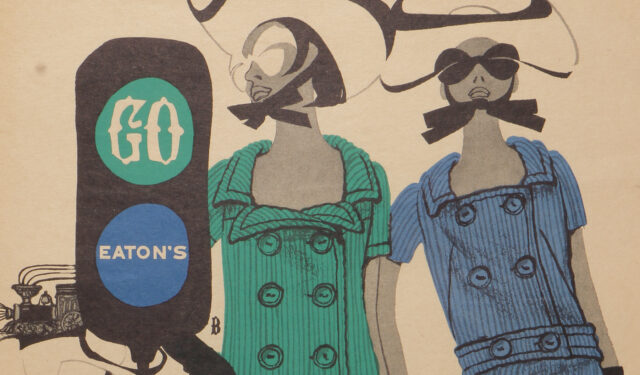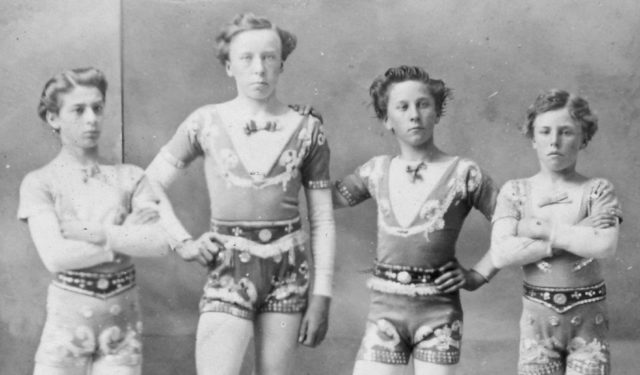Packing costumes for transport : it’s a wrap !
Learn more about the challenges of packing and safely transporting artefacts to be loaned for an exhibition.
October 30, 2023
While inter-institutional loans are often challenging for museum technicians, they are always a pleasure to work on because of the opportunity to apply our technical knowledge as we collaborate with other Museum departments.
For the exhibition Parall(elles): A History of Women in Design, the Montreal Museum of Fine Arts (MMFA) borrowed a number of artefacts from the McCord Stewart Museum’s collection. Among these were a yellow velvet evening dress created by fashion designer Ida Desmarais and a wedding dress embroidered under the direction of the Montreal Society of Decorative Art. Since the MMFA is located not far from the McCord Stewart Museum, the costumes were transported in lightweight packaging. I was given the job of packing these two dresses and the accessories needed to mount them.
To ensure that readers properly understand the technical terms used in this article, here is a short glossary:
- Cerex: transparent textile made of nonwoven nylon
- Coroplast: sheets of corrugated polypropylene material used primarily to make containers
- Lightweight packaging: packaging that does not require the use of a hard case (in wood, for example)
- Ethafoam: rigid polyethylene foam
- Twill tape: woven cotton ribbon
- Microfoam: flexible polypropylene foam
- Tyvek: opaque, slippery, nonwoven polypropylene textile
INTER-DEPARTMENTAL CO-OPERATION
The support of colleagues from the Conservation Department is invaluable when working with artefacts to be loaned. In this case, the textile conservator, Sonia Kata, advised me not to layer the two dresses on top of one other in the same box because they could not support the weight of another garment. The velvet of the evening dress risked being flattened, while the embroidered dress was much too fragile.
I then received some recommendations from Caroline Bourgeois, another Conservation colleague, who is charge of creating museum mannequins and mounting costumes. To simplify the work involved in mounting the dresses once they arrived at the MMFA, the packaging had to be easily to quickly opened. Furthermore, since the mannequins Caroline made also had to be transported, she sent me a list of everything that had to be packed.
PRODUCTION
Once I had been told about all the constraints related to the objects, I could start thinking about what to do! I began by constructing two boxes out of Coroplast to transport the dresses. I made these boxes the same size as the drawers in the Museum’s costume storage area where the two dresses are preserved so that the wrappers created could be reused to transport or even store very fragile costumes.
The wrappers had a rigid Coroplast panel in the centre, onto which I glued a layer of Microfoam padding. This panel was then inserted into a cross-shaped assembly of two pieces of Tyvek. The Tyvek pieces were longer than the panel, meaning they could be folded over to close the wrapper and secured using twill tape. I also added cotton webbing handles to make the wrapper easier to lift and carry.
The arms from the mannequin for the embroidered dress were kept inside the sleeves during transportation. Like the other parts of the mannequins constructed for this loan, the arms are made of lightweight, neutral materials. They were therefore ideal for maintaining the shape of the sleeves during transport. The shoulders and skirt pleats of the yellow dress were lined with padding once they were inserted in the wrapper to prevent the fabric from wrinkling during its journey, as well as to support the garment’s fragile seams.
After sliding the dresses into their respective wrappers, I wanted to provide additional support. So I added a piece of Cerex on top of each one, pinning it to the Tyvek wrapper.
Since there was enough space available in one of the large Coroplast boxes, I stored soft mounting materials under the yellow dress. I had already glued an Ethafoam frame into the bottom of the box to absorb the shocks of transportation, so I used the empty space in the centre of this frame to pack additional materials.
PACKING THE MANNEQUINS
To pack the mannequins, I recycled cardboard boxes the Museum already had. I used two existing containers, modifying their openings, to make a single box tall enough to transport the busts. One of the two stands, along with its pole, was packaged in a padded sleeve prepared by Caroline and included in the box, while the other was packed separately.
MOVING DAY
After completing the shipping containers, the final step was to put the wrappers holding the dresses into the boxes and seal everything with a layer of polyethylene. Every artefact has to travel in a sealed package to protect it from bad weather, temperature fluctuations and destructive pests like insects.
During this last stage, I took photographs at each step of the packing and unpacking process and used them in a guide written for the borrowing institution. Once this document was completed and the boxes were properly sealed, it was time to send it all to the MMFA via a museum transport company!


